
Direct and indirect visualization of bacterial effector delivery into diverse plant cell types during infection
Plant Science Research Weekly, Research0 Comments
/
Bacterial effectors are proteins produced by bacteria and introduced into their hosts, where the effectors support successful infection by the pathogen. Effectors can function in diverse cells and cell compartments, but many studies of effector localization have relied on overexpression systems which…
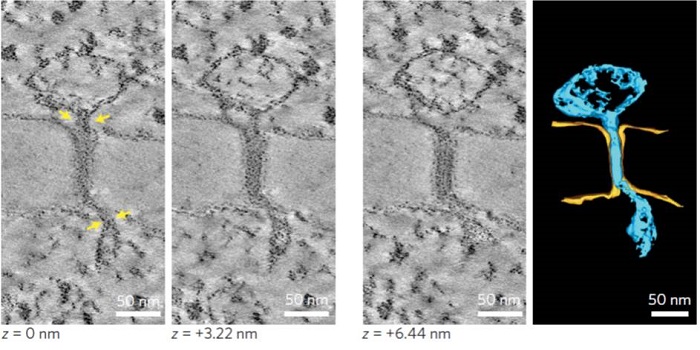
Architecture and permeability of post-cytokinesis plasmodesmata lacking cytoplasmic sleeves ($)
Plant Science Research Weekly, ResearchPlasmodesmata are pores between cells through which viruses, proteins, small RNAs and other molecules can pass. The pores are usually described as being lined with a layer of plasma membrane with a tube of endoplasmic-reticulum membrane through the center. These membranes and associated proteins are…

ABA is Required for Cuticle Formation Independent of Water Stress
Blog, Plant Physiology, Plant Physiology: On The Inside, ResearchThe waxy cuticle, a key barrier to desiccation and pathogen entry, is a dynamic structure, the composition, area, permeability and thickness of which can change in response to environmental conditions. For example, water deficit in Arabidopsis (Arabidopsis thaliana) triggers an increase in the accumulation…
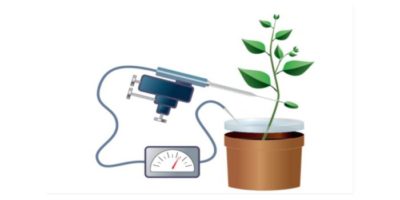
Review: Zooming in on plant hormone analysis: Tissue- and cell-specific approaches ($)
Plant Science Research Weekly, ResearchThroughout plant life cycle, from germination till reproduction, every event is regulated by a highly complex network of hormones. Unlike animals where hormones are synthesized in specific glands, each plant cell is able to produce hormones. However, hormones are synthesized in specific organs in plants.…
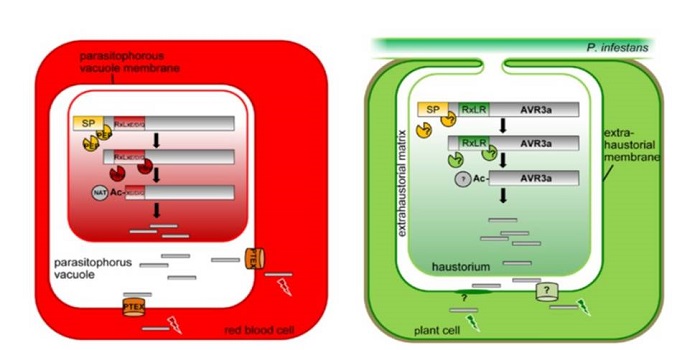
An Emerging Paradigm? RxLR Cleavage Before Effector Secretion
Research, The Plant Cell, The Plant Cell: In BriefEukaryotic pathogens are responsible for devastating plant diseases that threaten food supplies globally – think potato blight caused by the oomycete Phytophora infestans, rice blast caused by the fungus Magnaporthe oryzae, and wheat stem rust caused by the fungus Puccinia graminis f. sp. tritici.…

Role of SPA proteins in COP1 subcellular localization ($)
Plant Science Research Weekly, ResearchSPA (SUPPRESSOR OF PHYTOCHROME A-105) proteins form a complex with COP1 (CONSTITUTIVELY PHOTOMORPHOGENIC 1) and are required for COP1 to respond to changes in the light environment and transduce light signals and influence plant development. In this paper, Balcerowicz et al. investigated the importance…
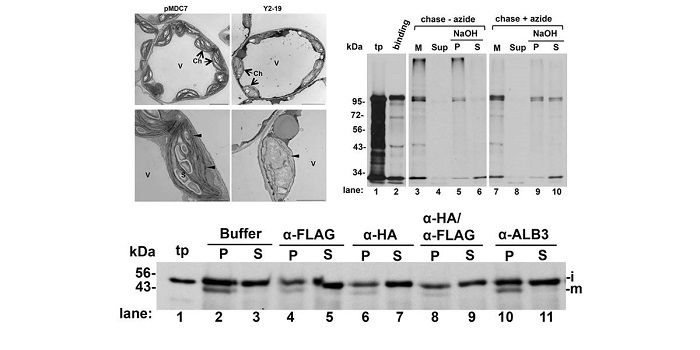
Identification of putative substrates of SEC2, a chloroplast inner envelope translocase
Plant Science Research Weekly, ResearchChloroplasts have evolved from photosynthetic bacteria, and genes necessary for chloroplast function have moved from the chloroplast to the nuclear genome of the host eukaryotic cell. Proteins encoded by these genes are made in the cytosol and imported into the chloroplast using protein translocases. …

The RxLR motif of the Phytophthora infestans effector AVR3a is cleaved before secretion ($)
Plant Science Research Weekly, ResearchRxLR effectors are proteins secreted from pathogens that enter the cells of the host and support the effectiveness of the pathogen in various ways. Their name refers to the sequence RxLR (Arg-Xxx-Leu-Arg). Previously, this sequence has been thought to be involved the effector’s entry into the host…
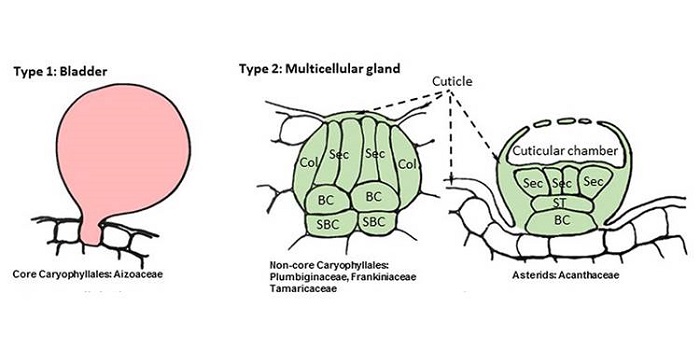
Review: Making plants break a sweat: the structure, function, and evolution of plant salt glands
Plant Science Research Weekly, ResearchMany agricultural lands are becoming saltier as a consequence of irrigation and sea water incursion, yet most crops are very sensitive to salt. Salt glands that accumulate and secrete salt have evolved independently at least 12 times in plants. Dassanayake and Larkin review the structure, function and…

